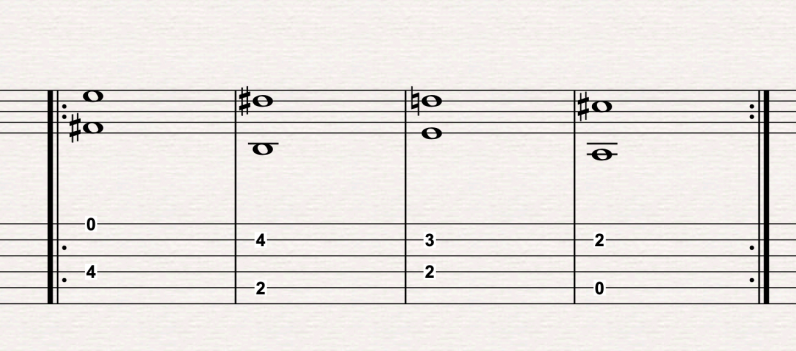Mother Nature's Son & Ziguezon
Zieguezon finishes the cycle of Quebecois songs I wrote for the incomparable
----Bowers Fader Duo----
-
wonky:
At the end of each verse of this setting of Ziguezon there are allusions to the harmonies that open the Beatles' Mother Nature's Son--
-
The harmony turns when the low E appears--
-

G# -7b5 is heavy on minor thirds. Adding the low E makes a dominant 9 chord, which is very whole tone heavy. You go from Wagner's Tristan chord to a chord that's all over Debussy and Ravel--in Ravel's Pavan for Dead Princess, for example. The dominant 9 is a half-diminished 7 chord with an extra note; but it's also a dominant 7 chord with a 9th. It is symmetrical.
I feel that the French loved it becasue it neutralized the chord that so enthralled them with and to Wagner. The French loved Wagner, and hated Wagner.
The Tristan chord is misty; it floats. The dominant 9 chord is a quick change of light. The air in the room changes. In the Beatles the appearane of the dominant 7 often clears the mist. Look at Julia.
Hermaphroditic chords--look at the tonic I chord in Villa-Lobos, with added 6. It is neither major nor minor. The Beatles move shows that adding the low E actually erases the half diminished feeling. The dominant 7 overpowers the half-diminished (aka -7b5) chord.
https://www.youtube.com/watch?v=TMMiXjwhODU


In verse 5 of Ziguezon, I try multiplying the Beatles move by 5, mod 12. It was an experiment. The added note should still carry a punch. In the Beatles move, the E breaks the octotonic (Tristan chord) and unlooses a whole tone scent, and more powerfully, the dominant 7 scent. In my M5 move, the E transforms to Gb; it still breaks the octotonic that precedes.
For a while some of us called this "interal vector music", but everyone strenuously objected. 21st C. is nevertheless very concerned with stories and dramas about interval content. Transposition is a local phenomenon, a mid-phrase phenomenon.
How to do multiplicative transformations--
A semitone is a 1; a whole step is a 2, etc.
1 X 5 = 5
a semitone becomes a fourth.
5 is a fourth
2 X 5 = 10
A 10 is a minor 7th.
(also a -2)
3 X 5 = 15
In mod 12, a 15 is a 3. Minor thirds M5 back to themselves.
4 X 5 = 20
20, mod 12 is 8 -- the difference from the nearest multiple of 12.
(An 8 is like a -4.)
5 X 5 = 25
25, mod 12 is a 1. Fourths M5 to a semitone.
The uptown people experiment to try to see if there's any musical value to such things.
Before Babbitt figured out the multiplicative aspect, Bartok called this the "circle of 5th transformation".
Broadly, the structural equivlence of semitones and 5ths is seen very clearly in traditional, "tonal" music. Here is an example--
guitar treble clef is cut off--
In 12 Bar Blues, with all the chords Dominant 7ths, sometimes the players omit all but the tritone. Notice: the movement of the tritones is the M5 of the movement of the roots. --(HA!)--

